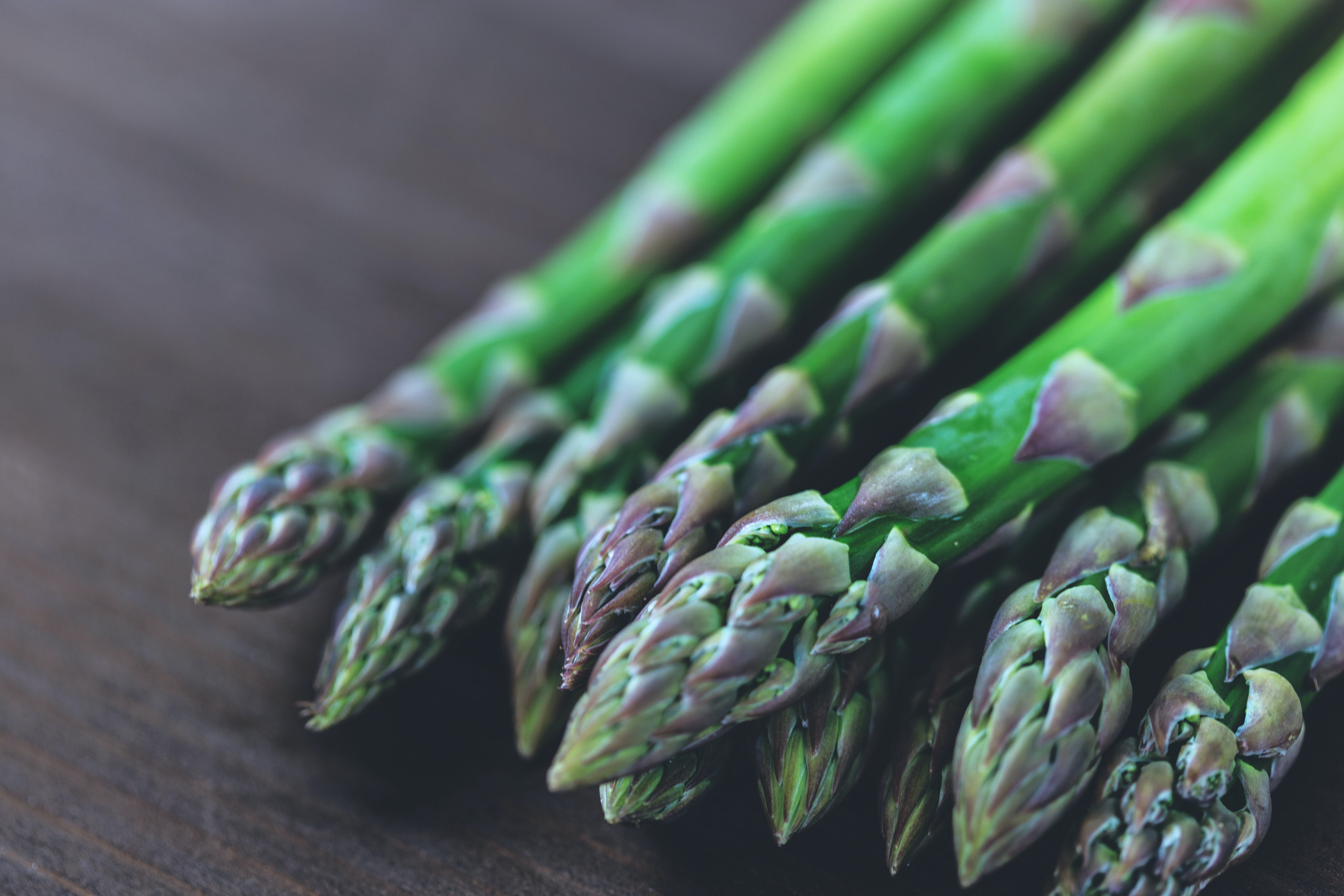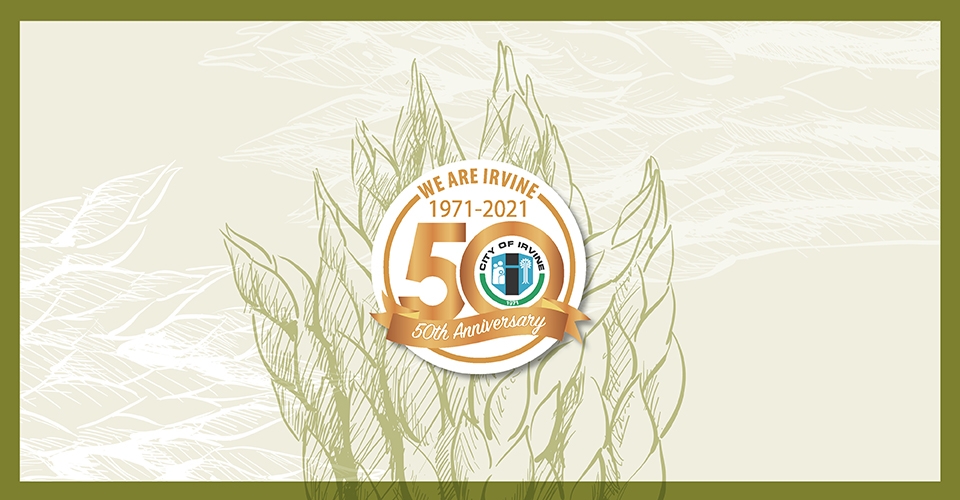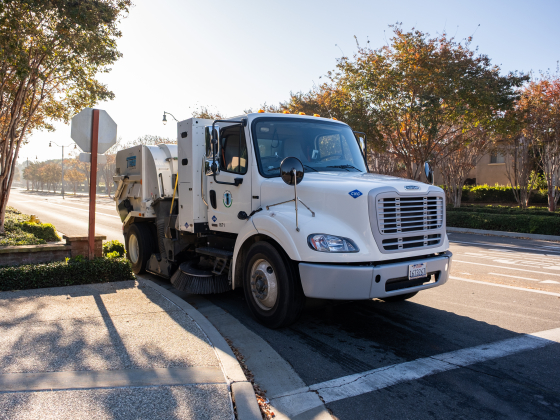Irvine & Asparagus
Did You Know?
 Asparagus is the official vegetable of the City of Irvine! You can find hints of it throughout the City, from obvious tributes (oversized playground displays at the newly renovated Plaza Park) to subtle homages (our City logo — that's not the tree you might have thought it was!).
Asparagus is the official vegetable of the City of Irvine! You can find hints of it throughout the City, from obvious tributes (oversized playground displays at the newly renovated Plaza Park) to subtle homages (our City logo — that's not the tree you might have thought it was!).
 Agricultural History
Agricultural History
Part of the land incorporated into the City of Irvine began in the 1860s as a pastoral sheep-raising community known as Irvine Ranch. As agricultural enterprises fueled the economic development of Orange County leading up to World War II, 110,000 acres of the Irvine Ranch began to dominate the region. By 1910, Irvine Ranch was known as one of California's most productive farms. One of the most important crops from Irvine Ranch at this time was — you guessed it — asparagus!
Plaza Neighborhood Park
Plaza Park Playground, located in Plaza Neighborhood Park at 610 Paseo Westpark in Irvine, includes a tribute to our City vegetable in the form of oversized play asparagus, among many other fun elements for kids! Learn more here.

How to Plant Asparagus
Growing asparagus from seed takes patience, but can yield an abundant crop for 20+ years to come if done correctly. Here are a few tips to get you started.
Planting Seeds
- If possible, start asparagus seeds indoors or in a greenhouse mid-February to May under bright lighting.
- Soak the asparagus seeds in hot water for a few hours.
- Plant each seed 1/2 inch deep in soil, in individual 2-inch pots.
- You should see evidence of sprouting two to eight weeks later.
Transplanting Seedlings
- After 10-12 weeks in pots, your asparagus seedlings are ready to transplant. Make sure it's not too cold outside!
- Clear your planting area of all weeds and grasses. Asparagus will not survive if they're competing for soil nutrients.
- Place your seedlings in the ground, 18 inches apart, in rows that are spaced 3 to 6 feet apart.
- Pro tip: Plant asparagus near tomatoes. The two plants are natural repellents of pests that prey on the other.
Harvesting Your Crop
- Keep your soil moist. Asparagus thrive in swamp-like growing conditions, and proper watering is extra important for the first three to five years after planting.
- As the plant grows, cover the crown with soil and fertilize in the spring.
- Don't harvest the plant until its third year to give it proper time to grow.
- Harvest asparagus spears by cutting them 1-2 inches below the ground and at least 2 inches above the crown with a sharp knife or asparagus harvesting tool.








